Test your might

Fighting games have always been about walking the line between simplicity and complexity. Their premise is easy to comprehend: Beat up the other guy. Two fighters--or two teams of fighters--enter, one leaves, with only a health bar standing between them. Even in 2012, these games are still largely based in 2D-style arenas, a tenet that continues to keep them reminiscent of the arcade days of yesteryear. For all the high production values, super combos, and increasingly complex controls that modern fighting games may feature, theyll always be based on those basic principles that endeared them to players long before todays technology.
Thus, its no surprise that many in the dedicated fighting game community look back at the history of fighting games fondly. And while most fans will swear by Street Fighter II as the be-all, end-all of the genres roots, the reality is that things are a little more complicated. So lets take a look back at this rich--yet still straightforward--history, and see if we can parse out the knockouts from the knocked-out.
Makings of a champion
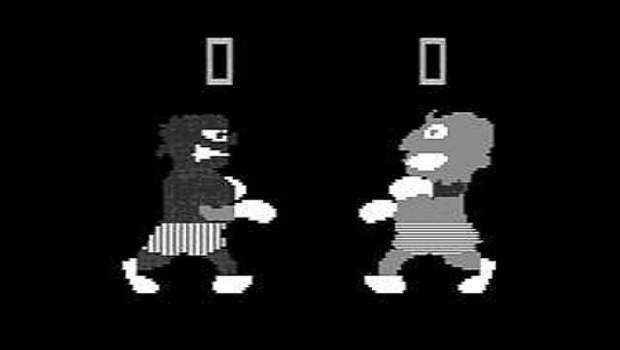
Fighting games beginnings arent exactly rooted in the kind of titles we recognize as being part of the genre today. Instead, the first instance of virtual hand-to-hand combat was in Heavyweight Champ, a 1976 arcade boxing game from Sega. It sported black-and-white graphics, the side-view perspective that would soon become the standard for all fighters--and, interestingly enough, was controlled through a pair of boxing gloves that were tethered to the arcade cabinet.
Another one of the earliest recognized fighters was Warrior, published by Vectorbeam for the arcade. Like Heavyweight Champ, Warrior wasnt a fighting game in the traditional sense, instead featuring two swordfighters in one-on-one combat. Despite being unique for its time, Warrior was by-and-large terrible, with hideous looks and sluggish controls. Nevertheless, games like Warrior and Heavyweight Champ laid the most basic foundations for the higher-quality fighters that would follow.
Karate Champ brings the basics
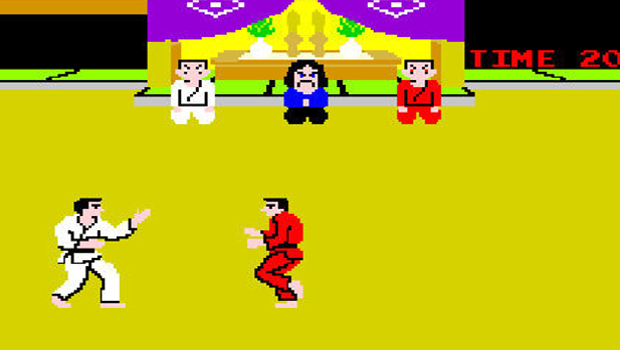
Perhaps the first of those high-quality fighters was Technos Japans Karate Champ--a game that, while basic, can probably be considered the first fighting game (as we know them now). It featured numerous innovations that would recur in later fighters, including dual-joystick, no-button controls, extra stages, and best-of-three round matches.
It was even followed by one of the first true fighting game sequels, Karate Champ - Player vs. Player, which was released a few months after the originals debut in 1984. But most importantly, Karate Champ helped establish martial arts as the preferred basis for fighting games in general, a characteristic which endures today.
Urban Champion defends the streets

Nintendo entered the fighting game scene shortly after Karate Champ with the forgettable Urban Champion, also released in 1984. All-in-all, it failed to live up to the high standards that Nintendo had set with its other first-party titles at the time. But that didnt stop Urban Champion from introducing a handful of conventions that have gone on to become major staples of fighting games in general.
Weekly digests, tales from the communities you love, and more
Chief among these was the ability to easily defend and evade; it sounds simple, but somehow hadnt been a fundamental aspect of previous fighters. It also had a stamina bar, a simple two-player mode, and was one of the first titles to feature anything resembling what are now called ring outs. What Urban Champion didnt feature, though, were seemingly obvious elements like a health bar, ducking, or jumping, all flaws which have kept Urban Champion from achieving Nintendos typical standards of quality.
Karateka and genre confusion
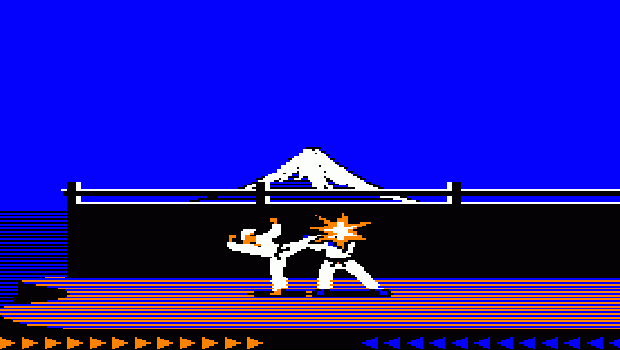
Its worth noting that the definition of what exactly a fighting game consisted of wasnt entirely clear by the mid-eighties. While our label-centric times could easily distinguish a beat-em-up from a traditional fighter, players thirty years ago didnt have such luxury. This led to many titles that were largely seen as fighters at the time, but probably wouldnt be as such now.
One of the better examples of these kind-of-but-not-really fighters was 1984s Karateka, the first title from future Prince of Persia creator Jordan Mechner. Originally designed for the Apple II and later ported to home consoles, Karateka had wonderful production values for its time. The plot, audio, and animations are all deserving of praise, though the games frustrating difficulty and repetitive combat dragged it down a bit. Karatekas fights were primarily one-on-one karate bouts, which has led some to deem it a fighting game, but its probably better classified as a hybrid between that and a side-scroller.
Japanese fighters quietly change the game

The mid-'80s were certainly a busy time for fighting games, as even more soon-to-be genre standards continued to arise through a handful of now-lesser-known fighters. First, the Japan-exclusive Onna Sansirou: Typhoon Gal (yes, thats the real title) was the first entry in the genre to include throws and grapples, as well as the first to feature multiple enemies to fight at the same time. Next is Shanghai Kid, which was the first fighter to feature a combo system (albeit a rather rudimentary one).
Finally, theres Konamis Galactic Warriors. Somehow under-recognized after all these years, Galactic Warriors was the first mech fighting game. It also featured a ton of seminal mechanics: being able to play as more than one character, projectiles, the ability to block and attack multiple times in midair, character-specific move sets, attacks that varied in power, and a more traditional health bar. Yes, this game brought a lot to the table--but its slow-moving combat and occasionally absurd difficulty may be what kept it from being remembered as one of the greats.
Yie Ar Kung-Fu sets the standard

Fighting games as a whole continued to expand and improve upon themselves up through 1985, when a couple of highly influential fighters were released. One of those, Konamis Yie Ar Kung-Fu, took the solid fundamentals of Karate Champ and the innovations of games like Galactic Warrior, combined the two, and came away as what many consider to be a genuine kick off point for all of fighting games. It had multiple unique opponents that each had their own specific fighting style, a complete and relatively coherent plot, and an extensive--for its time--combo system that utilized joystick movements, button presses, and your characters fighting stance.
That same year saw the launch of The Way of the Exploding Fist. It didnt control as tightly as Yie Ar Kung-Fu, but wound up being one of the most popular fighting games ever released. It was so popular, in fact, that its largely known today for basically being copied by various games that followed its launch. It had plenty of redeeming qualities, though (especially in the graphical department), and even spawned a couple follow-ups later on.
Street Fighter II skyrockets
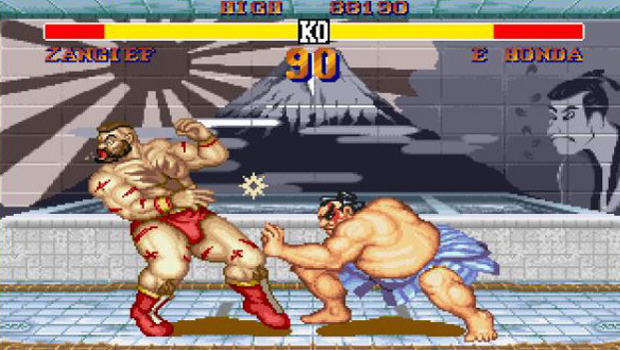
The majority of post-1985 fighting games were too busy trying to duplicate the successes of Karate Champ, Yie Ar Kung-Fu, and The Way of the Exploding Fist instead of actually trying to improve the quality of their releases. Thus, the next couple of years were riddled with substandard fighters, which even included the original Street Fighter, released in 1987. While that game did feature six-button controls and special moves, it has generally been all but forgotten. Its sequel, however, just may be the most important game in the genres history.
Released in 1991, Street Fighter II refined all the previously invented innovations and conventions that came before it, making it a huge hit with arcade-goers all over the world. Besides looking fantastic, SF II played like a dream, and featured enough variety in its move sets and characters to keep players coming back for weeks. SF II also changed the face of competitive gaming, by localizing versus play. Members of the fighting game community may have existed before Street Fighter II, but the sequel brought them all together en masse for the first time.
Fatal Fury and co. aim for the top

Its easy to go overboard and look back at the influence of Street Fighter II through rose-colored glasses, but the majority of fighters that followed SF II once again had a knack for trying to copy the champ rather than beat it. One of the few exceptions to this stagnancy, though, was Fatal Fury, the first fighting game from longtime genre stalwart SNK.
Released for the Neo Geo, it marked the beginning of not only the Fatal Fury franchise, but the later King of Fighters series too, since the games plot revolved around the King of Fighters tournament. It sported a deeper narrative, spectacular special moves, and the ability to move from the background to the foreground while fighting. Though it wasnt nearly as successful as Street Fighter II, SNK would have later success with the likes of Samurai Showdown and Art of Fighting.
Mortal Kombat creates controversy and competition
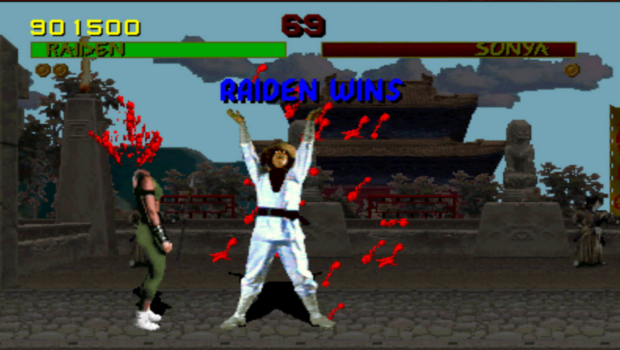
Street Fighter II would remain the clear top dog until late 1992, when Midway released the first Mortal Kombat, a game which was, lets say, controversial in its day. Featuring ultraviolent finishers known as Fatalities, digital character models, the ability to juggle characters in midair, and quirky Test Your Might minigames, Mortal Kombat was, surprisingly, very accessible to those who were old enough to play it.
MK controlled fairly simply, was goofy and gratuitously gory enough to be endearing, and had enough government legislators citing it as the spawn of Satan to give it that extra boost of popularity. Put all that together and it isnt surprising to hear that Mortal Kombat was just the first in a long franchise of media that continues on as one of the worlds premier fighting game series today.


